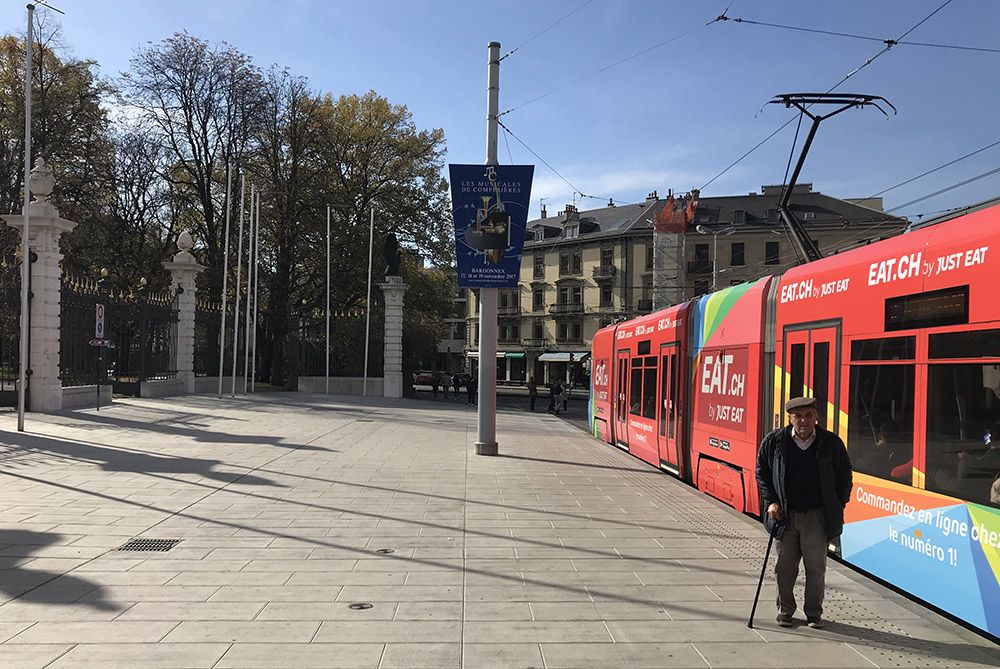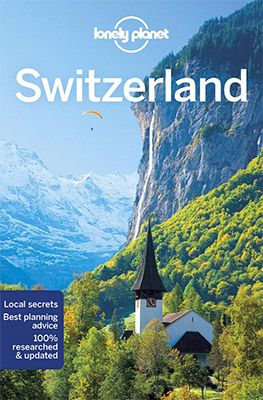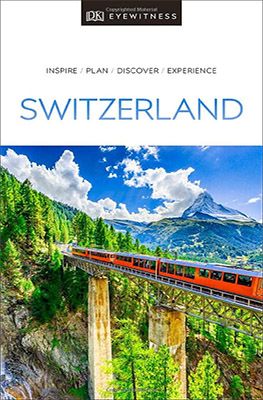City trip to the surprising city of Geneva
The capital of Peace, Geneva, is Switzerland’s second most populous city and the gateway to the Alps. The International Committee of the Red Cross (ICRC) has its headquarters in Geneva. Many people know the city from this. Additionally, the second headquarters of the United Nations is also in the city, in Palais des Nations.
Some people find the 22-centuries-old city a bit boring. We found the cradle of Swiss chocolate a surprisingly nice city that we definitely want to go to again! We’ll tell you why in this blog.
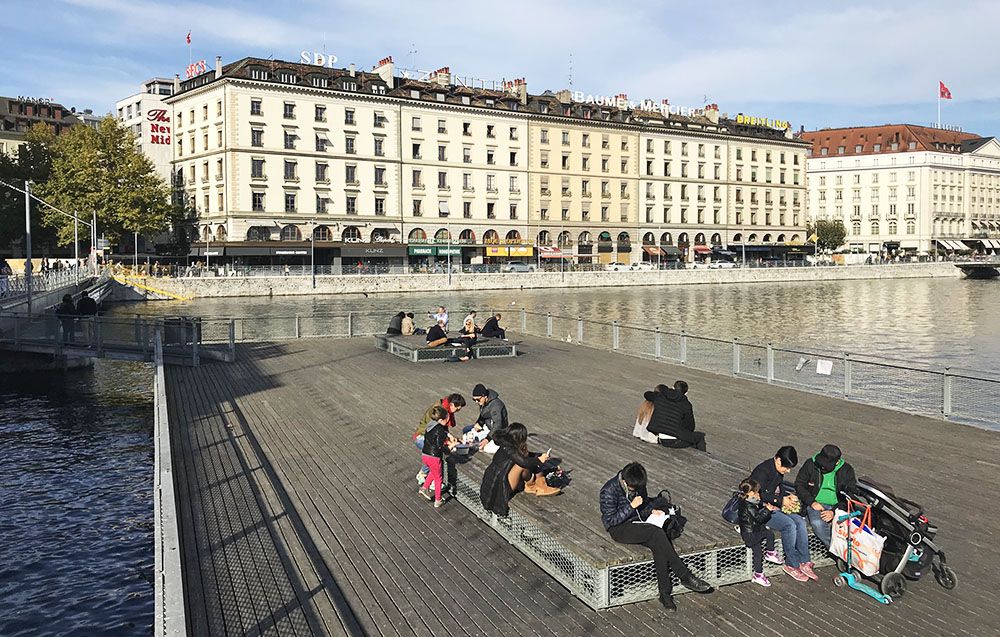
Sightseeing in Geneva
The old town
The old town is situated on a hill with fairly steep streets leading to it. This part of Geneva is about 25 metres higher than Lake Geneva. It is therefore best to climb to the Geneva cathedral, located at the highest point of the hill.
Although the old town is not very big, you can easily spend a few hours there. Some of the highlights include the Geneva cathedral (Cathédrale Saint-Pierre or St. Peter’s Cathedral), which dates from the 12th century. Underneath the cathedral, which used to be Catholic and later became Protestant, there is an archaeological site. The interesting tour that you can go on there not only deals with the history of the cathedral, but also describes why Geneva was founded there before the time of the Romans. Don’t forget to climb the cathedral’s towers for a magnificent view of Geneva and Lake Geneva.
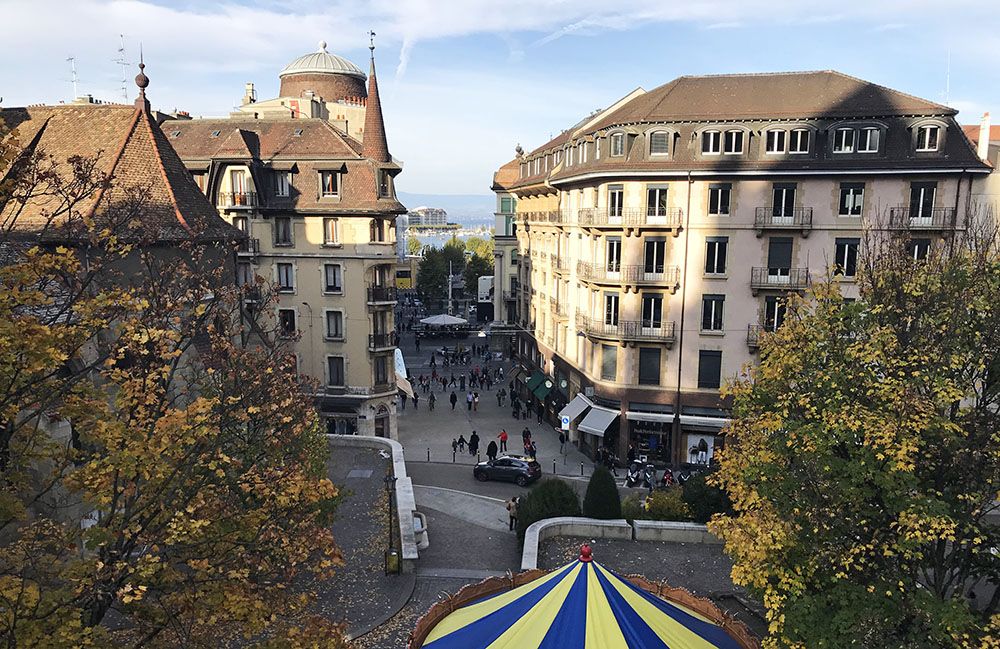
In the old town is also the beautiful city hall from the 14th century, which is not only beautiful to see from the outside. The city hall is located next to the Parc des Bastions where you will be treated to a panoramic view of the city. Other highlights in the old town are the birthplace of writer and philosopher Rousseau, and Maison Tavel, the oldest surviving private house in Geneva dating back to the 12th century.
There is also the old arsenal from the 17th century, which first served as a storage place for food and only later for artillery, as well as the popular and cosy Place du Bourg-de-Four, where you can enjoy sitting on a nice terrace. In addition, the old town has many wineries, art galleries and antique shops.
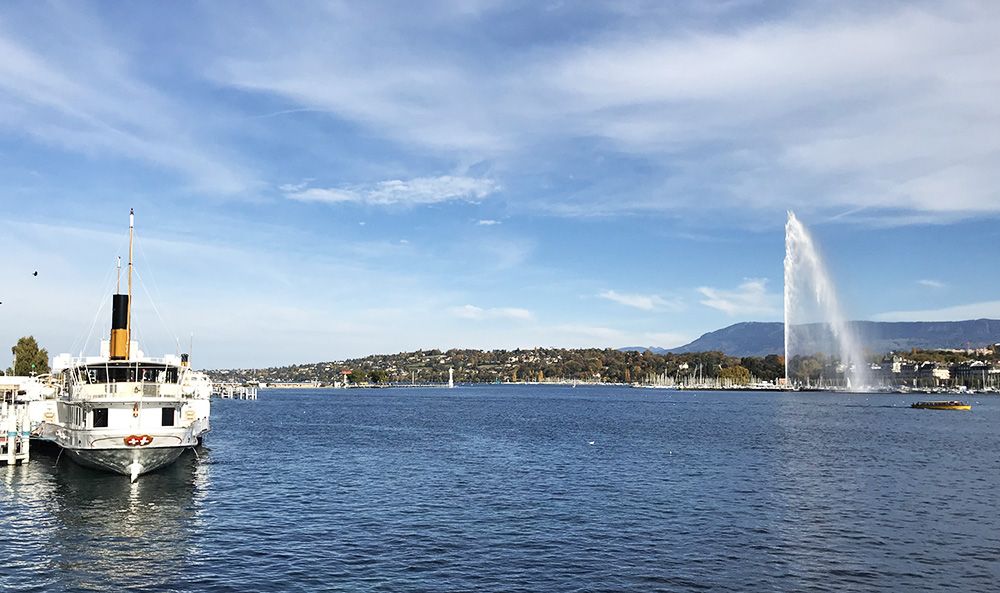
Jet d’Eau
The pride of the city is undoubtedly the Jet d’Eau, a water fountain with a height of 140 metres. The fountain, built at the end of the 19th century, is beautifully lit in the evening and is best viewed from a distance though you can also walk to it. Prepare yourself to get really wet!
International Red Cross and Red Crescent Museum
What may have impressed us most during our visit to Geneva is the International Red Cross and Red Crescent Museum, which is one of the most innovative museums in Europe. It is dedicated to the history of the Red Cross and the Red Crescent, and how the organisations have helped mankind during many wars and natural disasters. What makes the museum so special is that it does not take sides at all. Events are described as factually as possible by photography, text and the spoken word in a hologram.
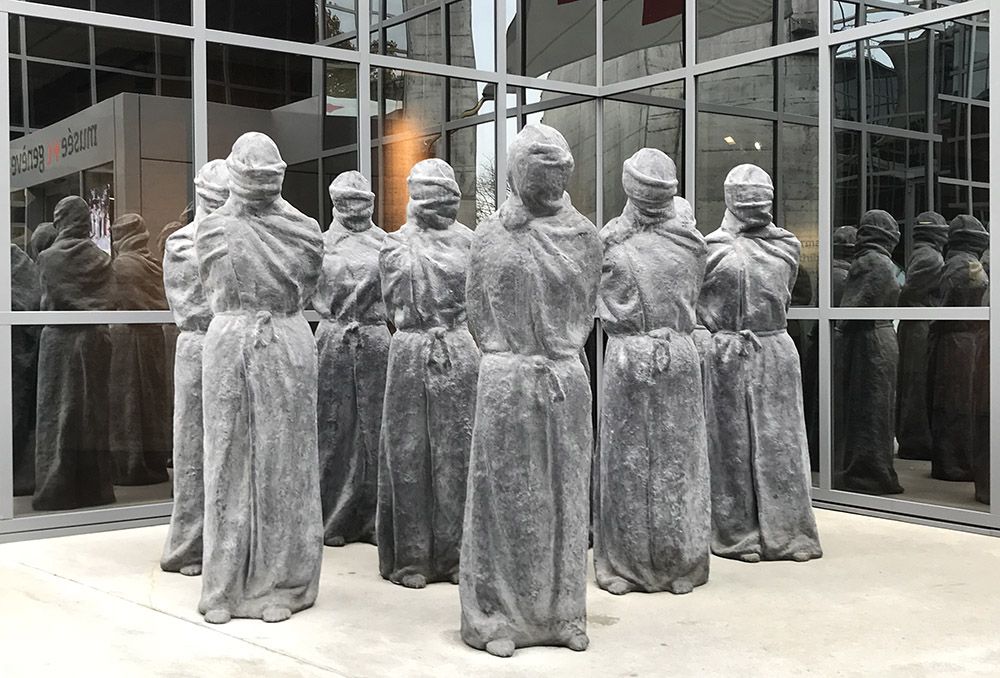
Parc des Bastions
What we found to be a lovely park to walk through and enjoy the peace and quiet in an already quiet city, is the Parc des Bastions. Situated between Place de Neuve in the northwest and the town hall in the southeast, the city park was originally created as a botanical garden in 1817. Nowadays you will find many works of art, a number of life-size chess and checker boards, a good restaurant, various fountains and monuments, and no fewer than 50 different species of trees.
The park is best known for the ‘Wall of the Reformation’ (Mur de la Réformation), a monument that shows large portraits of the advocates of the Reformation. In the 16th century, Geneva was an important refuge for Calvin, the leader of the Protestant Reformation, and his supporters. Opposite the wall is the University of Geneva with its public library.
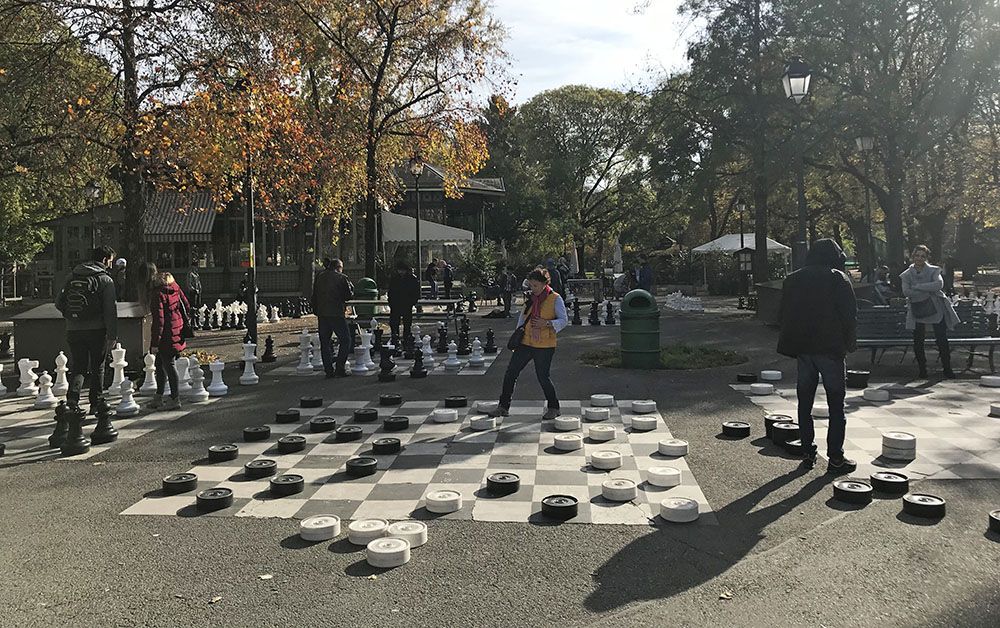
European Organisation for Nuclear Research (CERN)
Just outside Geneva, in the small town of Meyrin, is the world-famous European Nuclear Research Council (CERN). The organisation is also famous for the 27-kilometre-long Large Hadron Collider (LHC), the longest particle accelerator in the world. This may sound very complicated and possibly even boring. But, even if you didn’t have a fascination for elementary particles like I did in high school, your city trip to Geneva wouldn’t be complete without a visit to the CERN campus!
From the centre of Geneva, you can take the tram directly to CERN. Once there, visitors can see two interesting permanent exhibitions at their own pace: the ‘Universe of Particles‘ in the Globe of Science and Innovation, and ‘Microcosm‘, right next to CERN’s reception. Both exhibitions are easy for lay people to follow, and admission is free.
CERN also offers free guided tours of about two hours. You will first see a film about CERN. Afterwards, you will visit various (also old) locations on campus, both inside and outside, including the operating centre of one of the experiments. However, you do not go underground to the particle accelerator. You need to register online for the guided tour well in advance.
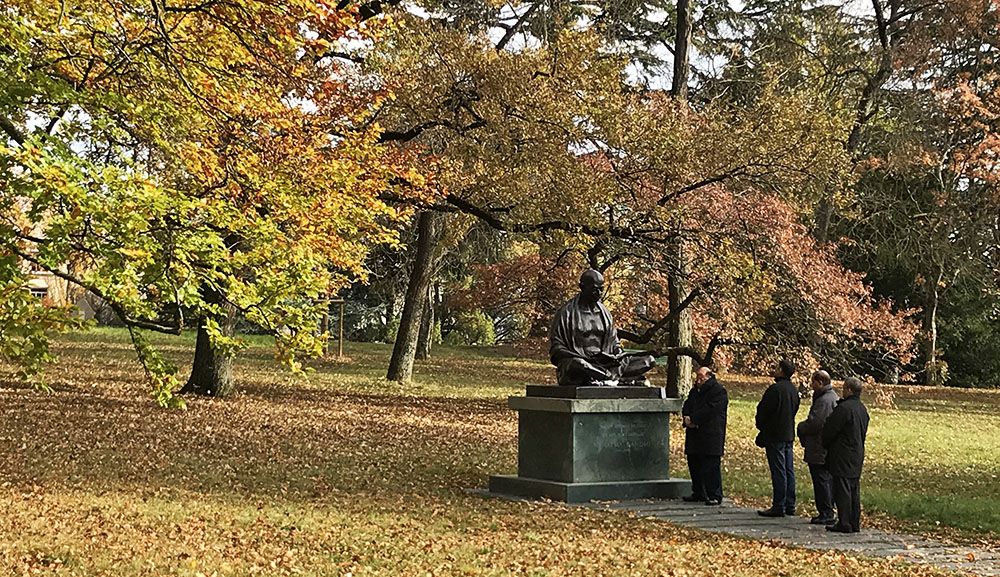
Palais des Nations
The stately and somewhat pompous Palais des Nations was first built in the 1930s for the League of Nations, the predecessor of the United Nations. When the final headquarters of the United Nations in New York was completed, the palace became the second most important seat of the organisation.
The Palais des Nations is well worth a visit. Four times a day you can join a guided tour in English for about an hour. With your guide you visit many rooms, including the Salle des Pas Perdus, the central conference room (the largest room) and the council chamber where many important historical negotiations have taken place. During the tour, you learn a lot about not only the history but also the current activities of the United Nations.
Just a few more practical things:
- Entrance fee is 15 Swiss francs.
- You need your passport to enter.
- Expect about 40 minutes for security so be on time.
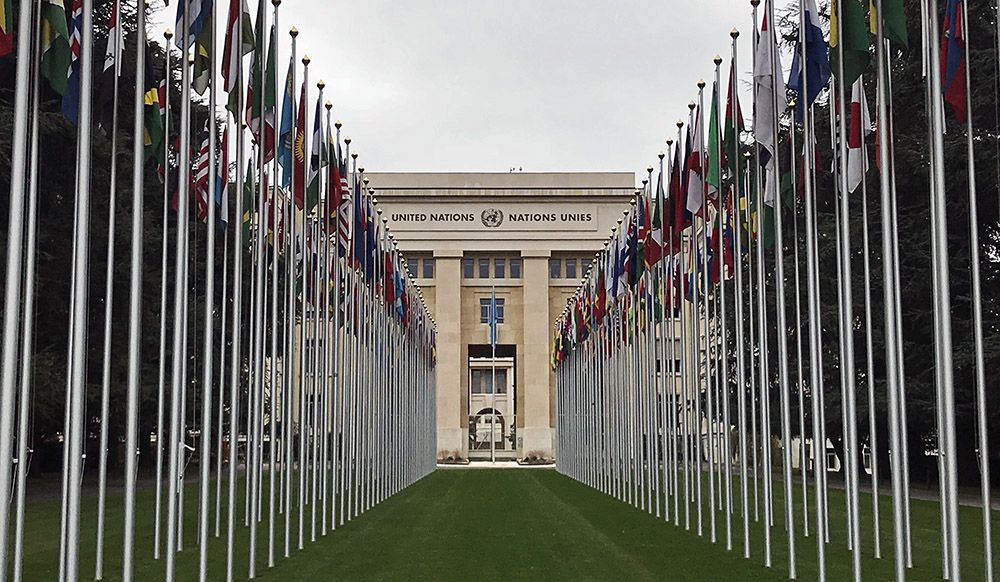
Practical matters
Accommodation in Geneva
In Geneva, you will find many options for accommodation. In addition to hotels and apartments, there are also hotels with perhaps the best views of Lake Geneva. We stayed in the nice and, by Swiss standards, not too expensive Tiffany Hotel. The perfect location in a quiet neighbourhood yet close to the old town, really appealed to us. In no time at all you can also walk to the Boulevard Georges-Favon where you can catch a tram to more distant places of interest.
Food and drinks
For a relatively small city, Geneva has a lot of restaurants. What’s more, thanks to the international community, there is also a lot of variety in international cuisine. When we were in Geneva, however, we mainly enjoyed Swiss cheese fondue. A restaurant that we can definitely recommend if you like cheese fondue, is the restaurant in hotel Les Armures in the old town. There is a nice ambiance and the extensive fondue card allows you to return several times. We also heard very positive stories about the restaurant Eat Me. During our next visit to this nice city we will definitely visit this restaurant too!
Best time to visit Geneva
In our opinion, June to October are the best months for a city break. It doesn’t rain much and the temperature is pleasant enough to go on nice city walks and find a spot on a terrace. We were there at the end of October and thanks to the sun, we had good temperatures during the day but cold evenings.
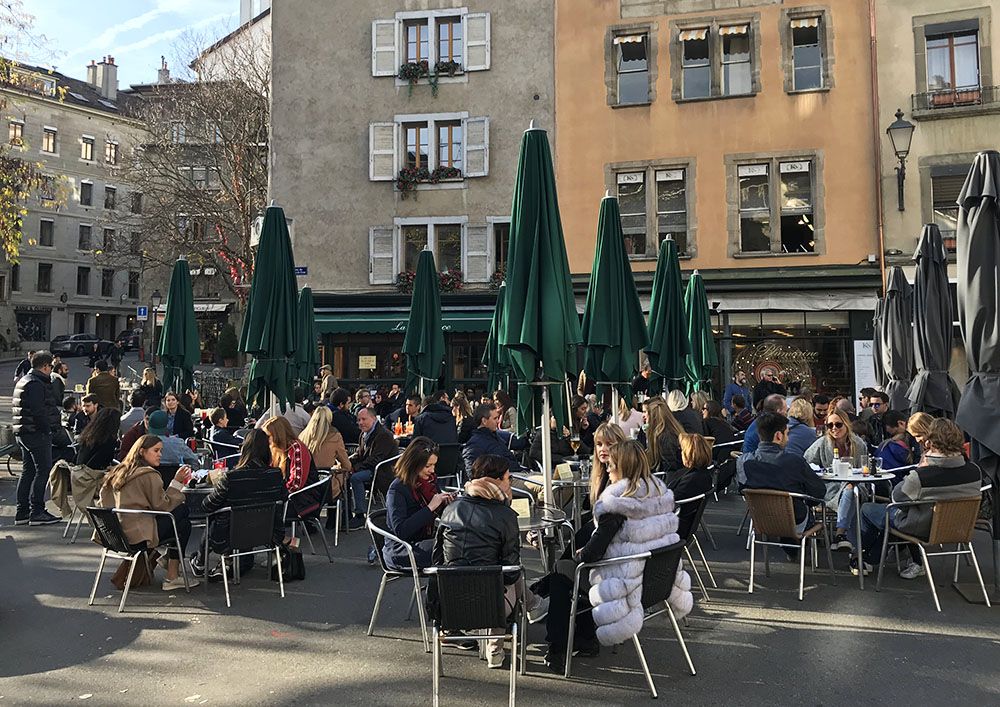
Moving around within the city
Like most cities in Switzerland, Geneva has a very efficient public transport system. Best of all, it’s completely free if you stay in a hotel in the city. For each night spent in a hotel, the hotel offers you a day ticket. We only used it once every so often because most of the sights in the city centre were within walking distance of our hotel. Only for our visit to the Red Cross museum, just outside the old town, and to the European Nuclear Research Council (CERN), which is located outside Geneva.
Another way to explore the city is by bike. Apart from the old city, Geneva is fairly flat and therefore easy to get around by rental bike. There are many beautiful cycling routes not only in the city itself, but also outside in the canton of Geneva. If you don’t come with your own bike, there is also something like Genèveroule in the city. If you don’t cycle longer than four hours, bicycle rental is free of charge. However, you do have to pay a deposit. More information on Geneveroule. We didn’t use it ourselves but the bikes did look decent and there are many locations where you can get one and take it away.
